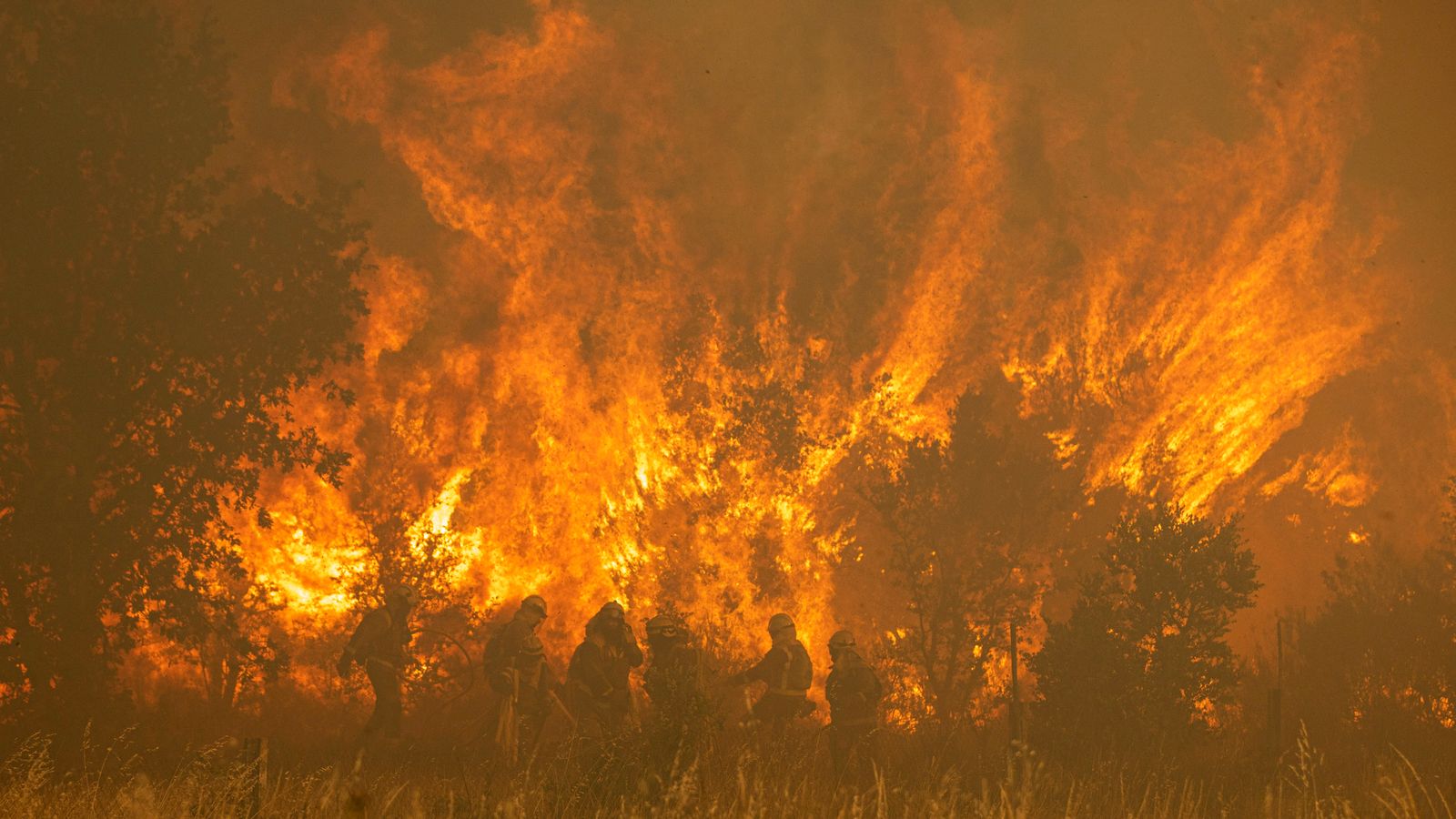Firefighters in Spain are struggling to contain wildfires in several parts of the country, amid a heatwave with temperatures reaching over 40C (104F).
The worst damage has been in the northwest province of Zamora where more than 61,000 acres (25,000 hectares) have been consumed.
More than 500 firefighters are being supported by water-dumping planes and helicopters in the sparsely populated area.
Experts have linked the abnormally hot period for Europe to climate change.
Throughout the week, thermometers have risen above 40C (104F) in many Spanish cities – temperatures usually expected in August.
A lack of rain this year combined with gusting winds have produced the conditions for the fires.
Many areas of Western Europe have faced under unseasonably hot temperatures over the past few days, compounding climate change fears.
British toddler drowns in swimming pool in Spain despite neighbour’s efforts to save him
COVID: Spain relaxes entry rules for Britons ahead of summer holidays
Europe weather: At least 40 injured by tornadoes in Germany – as heat in Spain soars 15C above average
The current heatwave in Europe started almost a week ago in Spain, where temperatures reached up to 43C.
The blaze that started in Zamora’s Sierra de la Culebra has forced the evacuation of at least 10 villages, although the drop in temperatures overnight on Saturday helped efforts.
Almost 20,000 hectares of land had been burned in the Sierra de la Culebra mountain range and the fire was “still active”, a tweet from the regional government of Castile and Leon said.
The spreading blaze caused the high-speed train service from Madrid to Spain’s north-west to be cancelled on Saturday – it was reinstated on Sunday morning.
Military firefighting units have been deployed in Zamora, Navarra in the north and Lleida in the north-east.
There have been no reports of lives lost, but the flames reached the outskirts of some villages both in Zamora and in central Navarra.
In other villages, residents looked on in despair as black plumes rose from nearby hills.
In central Navarra, authorities have evacuated some 15 small villages as a precaution, as the high temperatures are not expected to drop until Wednesday.
They also asked farmers to stop using heavy machinery that could unintentionally spark a fire.
Wildfires are also active in three parts of north-east Catalonia: in Lleida, in Tarragona and in a nature park in Garaf, just south of Barcelona.








